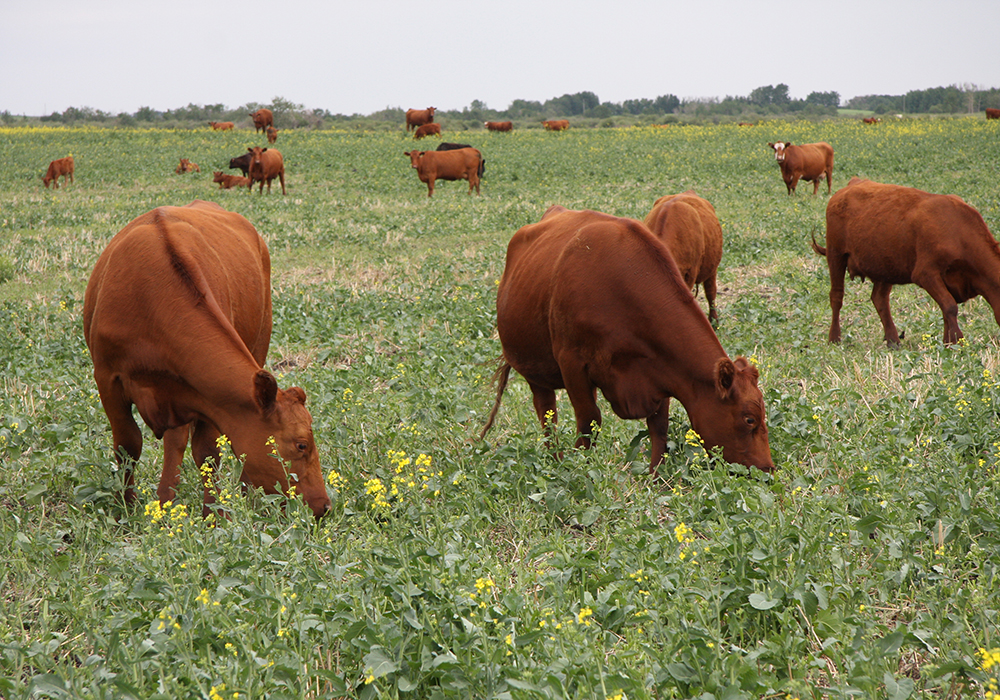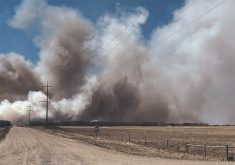Various programs have been implemented in drought years going back to the early 1980s in an attempt to make feed available for cattle producers. The drought response announced recently by Saskatchewan Agriculture Minister David Marit is the most logical and impactful I can remember.
In the past, support programs to transport hay have been implemented. Unfortunately, the support tends to push hay prices even higher. Donated bales from far away received a lot of media attention, but were totally inadequate to address the need.
Other times, support has been provided to move cattle to areas of surplus feed. That would have limited benefit this year. The feed shortage is widespread. Some areas are better than others, but no one has bumper production.
Read Also

Proactive approach best bet with looming catastrophes
The Pan-Canadian Action Plan on African swine fever has been developed to avoid the worst case scenario — a total loss ofmarket access.
The Saskatchewan response makes it a lot more appealing for grain farmers to sell their dried-up crops for greenfeed or grazing. Key to the program is a doubling of the yield at which a producer can have a grain yield considered as zero for the purposes of the crop insurance payout.
Barley is normally seven bushels per acre, with peas, wheat and durum at five bu. an acre and oats at 10. Those zero-out yields are now 14 for barley, 10 for peas, wheat and durum and 20 for oats, as long as the crop is being used for cattle feed.
Let’s say you have a drought-affected barley crop and crop insurance estimates the yield at 14 bu. an acre or less. That crop can be cut for silage or bales or it can be grazed. For crop insurance payout purposes the yield will be counted as zero.
Note that you can write off a field or even part of a field, but it’s still your overall yield of that particular crop on which crop insurance payments are based. If you have 100 acres zeroed out and you have another 100 acres that yield 20 bu. per acre, your average yield is 10 bu. per acre and this is deducted from your yield guarantee for payout purposes.
Another important change for this year is that zeroed-out yields will not be used for calculating your long-term average yield for future crop insurance coverage. That 14 bu. barley crop that you zeroed out will count as 14 bu. for your future yield coverage.
Grain producers will be able to help their livestock neighbours and also get a good deal themselves. Overall, it’s making the best of a bad situation.
What should grain producers charge for standing crop? That’s a tough question. It’s difficult to estimate how much feed can be generated from a dried-up crop. As well, nitrates from crop stress could be a problem, meaning the feed will have to be blended.
On barley in particular, market prices are well above crop insurance prices and that may convince some producers to thresh their crop rather than selling it standing. However, quality is an unknown. Will harvested barley meet the 48-pound-per-bu. threshold most buyers want or will the barley be light and discounted?
Harvesting cost is another consideration. A grain producer selling standing crop to a livestock producer will save combining costs, which are typically in the $25 to $30 an acre range.
It’s not a magic solution, but salvaged crop is the best hope for avoiding a massive breeding herd sell-off. No other viable feed source exists for cattle producers this year.
Kevin Hursh is an agricultural journalist, consultant and farmer. He can be reached by e-mail at kevin@hursh.ca.


















